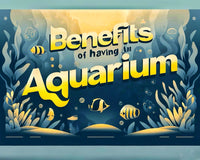栉水母:栉水母的奇迹
海洋是地球上一些最迷人、最奇特的生物的家园,栉水母也不例外。这些凝胶状的海洋动物以其生物发光和独特的摄食习惯而引人注目,使它们成为水下世界中迷人而美丽的居民。本文将探讨栉水母迷人的生物发光和摄食习惯,并提供有关在珊瑚礁水族馆中如何照顾它们的见解。
什么是栉水母?
栉水母属于栉水母门,是一种遍布全球海洋的凝胶状海洋生物。尽管它们看起来像果冻,但它们与水母截然不同,属于完全不同的门。栉水母以其成排的纤毛板而闻名,这些纤毛板被称为栉排,它们用这些纤毛板来移动。
主要特点:
•外观:栉水母的身体透明、呈凝胶状,侧面有八排纤毛板,或称梳状排。这些纤毛可以折射光线,创造出迷人的彩虹般的效果。
•尺寸:根据种类不同,栉水母的长度可以从几毫米到超过一米不等。
•生物发光:许多种类的栉水母都具有生物发光特性,发出蓝光或绿光,在黑暗的海洋深处也能看到。
令人着迷的生物发光
栉水母最迷人的特征之一是它们能够产生生物发光。这种自然光的发射是通过一种名为光细胞的特殊细胞内的化学反应发生的。
1.工作原理:
• 栉水母的生物发光是由荧光素(一种发光分子)与氧气在荧光素酶的催化下发生反应而产生的。该反应会发光,在水中可以看到一条发光的轨迹。
2.生物发光的功能:
•逃避捕食者:生物发光可以迷惑或惊吓潜在的捕食者,使栉水母有机会逃脱。
•吸引猎物:光线可以吸引小型猎物生物,使它们更容易被捕获。
•交流:生物发光可用于与其他栉水母进行交流,特别是在交配期间。
独特的喂养习惯
栉水母已经发展出几种独特的摄食策略来捕获猎物,其猎物主要由小型浮游生物组成。
1.触手:
• 许多栉水母都拥有长长的、粘稠的触手,这些触手拖在身后。这些触手上布满了胶质母细胞,这是一种特殊的细胞,可以释放粘性物质来捕获猎物。一旦捕获猎物,触手就会将猎物送到嘴里。
2.纤毛活动:
• 某些物种,例如 Cydippida 目的物种,利用它们的纤毛梳形成水流,将浮游生物吸引到它们的嘴里。
3.直接吞噬:
• 较大的栉水母可以直接用嘴吞食猎物。这种进食方式在缺乏长触手的物种中更为常见。
在海洋生态系统中的作用
栉水母在海洋生态系统中发挥着至关重要的作用,有助于维持海洋环境的平衡和健康。
1.浮游生物控制:
• 作为浮游生物的贪婪捕食者,栉水母有助于调节浮游生物的数量,进而影响整个海洋食物网。
2. 大型物种的猎物:
• 栉水母本身是大型海洋动物(如鱼、海龟和其他水母)的食物来源。
3. 海洋健康指标:
• 栉水母的存在和数量可以作为海洋健康和海洋生态系统变化的指标,因为它们对环境波动很敏感。
珊瑚礁水族馆的护理和维护
在珊瑚礁水族馆中饲养栉水母是一项具有挑战性但有益的事业,需要特定的条件和仔细关注它们的需求。1. 水箱设置:
• 栉水母需要大型开放式水族箱,水流要柔和,以模拟其自然的远洋环境。圆柱形水族箱或圆角水族箱是防止栉水母被困或损坏的理想选择。
2.水质参数:
• 保持水温在 72-78°F (22-26°C) 之间,盐度在 1.023-1.025 比重之间,pH 值在 8.1-8.4 之间。稳定的水质和定期监测至关重要,因为栉水母对环境变化很敏感。
3.喂食:
• 持续供应小型浮游生物食物,如桡足类、轮虫和幼年丰年虾。可能需要有针对性地喂食,以确保它们获得足够的营养。
4.照明:
• 虽然栉水母不需要强烈的光照,但模拟其自然环境的适度光照周期可以帮助它们维持生物节律。
5.兼容性:
• 栉水母最好放在特定物种的水族箱中,或与其他非攻击性、小型浮游生物食客一起饲养。避免将它们与可能伤害或吃掉它们的大型掠食性鱼类放在一起。
饲养栉水母的好处
对于能够满足其护理要求的水族爱好者来说,栉水母具有几个独特的好处:
1.令人惊叹的视觉展示:
• 栉水母的生物发光和彩虹色的纤毛运动在水族馆中创造出一种迷人而又超凡脱俗的景象。
2.教育价值:
• 观察栉水母可以为了解海洋生物学、生物发光和海洋生物多样性提供宝贵的见解。
3.生物多样性:
• 在珊瑚礁水族箱中添加栉水母可增强其生物多样性,促进生态系统更加复杂和动态化。












